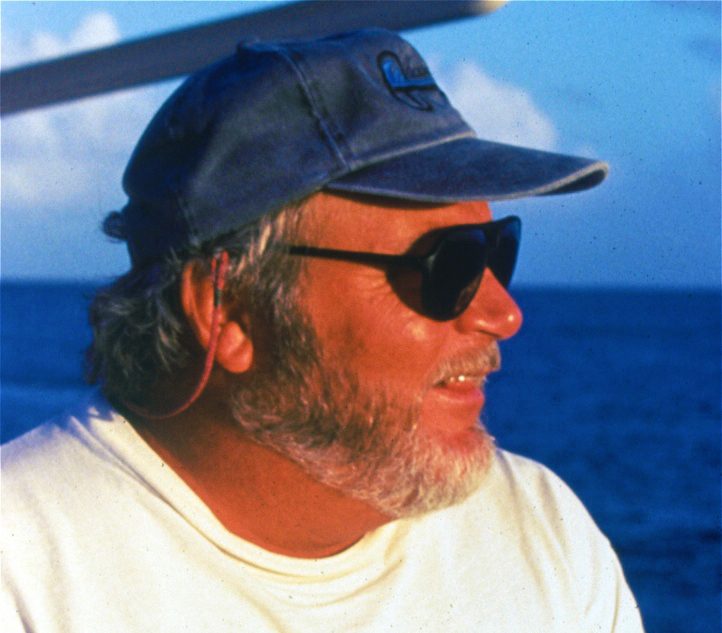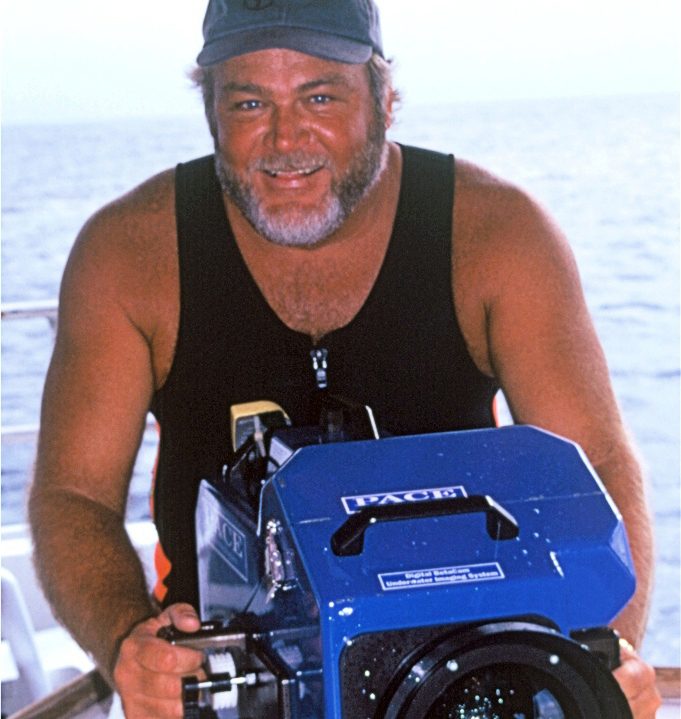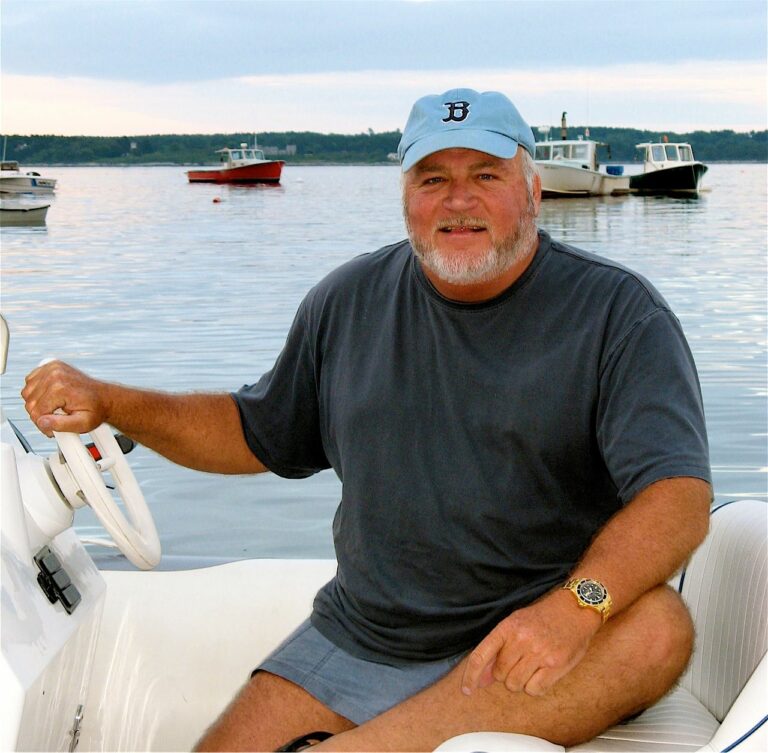US diver Bret Gilliam, one of the most influential scuba-diving pioneers and also one of the industry’s most successful entrepreneurs, has died in Maine following a series of illnesses at the age of 72.
Gilliam’s diving successes straddled most aspects of the sport. Physiologically unfazed by deep-diving without the help of mixed gases, he at one point held the world record for deepest scuba diver on air, descending to 138m in Roatan in 1990 and later extending this record to 145m.
But he is best remembered for his role in popularising mixed-gas diving through the establishment of the training agency Technical Diving International (TDI).
Born to a naval commander and his wife at the US Naval Academy in Maryland on the Atlantic coast on 3 February, 1951, Gilliam grew up living on the motor yacht his family would also use to relocate between postings. He has said that he could swim before he could walk, and that his first word was “boat”.
He was already a proficient freediver when he began his scuba training at the age of eight, taking an early YMCA-run course while the family were based in Florida. Certified in 1960, he started collecting fish for municipal aquariums, earning enough money to be running his own boat by the time he was 11.
Gilliam graduated from high school in 1969 with a reputation as an outstanding field-sports athlete and semi-pro surfer, going on to study history and political science at the University of Maine and Bowdoin College.
He held several diving jobs during this time, notably in the Caribbean in 1971 as diving supervisor for VAST Inc as it worked to develop new nitrox and decompression procedures, and became interested in underwater photography.
With the Vietnam War still raging Gilliam had been set to enter the US Army on a commission but because of his background was switched to participate in a secret Navy deep-diving project that involved filming nuclear submarines as they passed close to the divers at up to 50 knots.
Cited for heroism
In 1972 off St Croix in the US Virgin Islands he was cited for heroism after trying to save dive-buddy Rod Temple from oceanic whitetip sharks they had encountered at a depth of around 55m.
Gilliam stayed with Temple as he was dragged beyond 100m deep but, aware that the other diver was by then dead, he survived an out-of-air free ascent and subsequent decompression illness.
In 1971 Gilliam had worked off St Croix on underwater blasting operations to prepare a shipping channel, and earning up to $500 a day for this dangerous work gave him the seed money needed for his first significant investments. The following year he launched into the emerging recreational diving business by founding the dive-shop and Scubapro franchise VI Divers on the island.
Within a few years the business had accumulated a number of large dive-boats, contracts with marine scientists and film-companies, a commercial diving division and also a luxury yacht-charter fleet.

The business provided location services for Hollywood movies, TV series and documentaries, with the makers of The Deep, The Island of Dr Moreau, Abyss, Miami Vice and The Undersea World of Jacques Cousteau among the many that took advantage of the facilities on offer. Gilliam, who was a NAUI instructor, would work with the film-crews as location director, cameraman and operations manager.
In 1972 he created his consulting company Ocean Tech, and over the years would appear as a diving and maritime litigation consultant and expert witness in some 400 cases, representing both plaintiffs and defendants in almost equal numbers.
Biggest dive liveaboard
In 1977, Gilliam founded AMF Yacht Charters and in 1985 became president of the cruise-ship line Ocean Quest International, serving for some years as senior officer on its 168m flagship Ocean Spirit.
The biggest dive liveaboard in the world, this 10-deck vessel could accommodate 360 passengers along with 200 officers and crew and a professional dive-team of 30. With 10 diving tenders and her own recompression chamber, she would run up to 1,000 dives a day in the Caribbean off Mexico, Belize and Honduras.
The company was sold in 1990, the year Gilliam became president of Sea Ventures and took on the 43m motor yacht P’zzaz. By then he had already been a multi-millionaire for five years thanks to his shrewd investments in every aspect of the growing diving business.
However, an important factor in his contribution to the evolution of diving were his initiatives in drafting early technical training standards and protocols for using mixed gases and closed-circuit rebreathers.
In 1991 Gilliam joined the board of the International Association of Nitrox & Technical Divers (IANTD) and served as its vice-president. He was also elected to recreational agency NAUI’s board that year, later becoming its chairman and president.
But in 1992, following a split over direction with other IANTD directors he joined Mitch Skaggs and Tanya Burnett to form International Training Inc, the parent company of TDI and later Scuba Diving International (SDI) for recreational divers and Emergency Response Diving International (ERDI).
Gilliam remained president of the Maine-based company until it was sold on in 2004, and was heavily involved in drafting the content for its training courses.
Lifestyle rethink
An ardent and influential advocate of new technology, especially modern BCs and dive-computers, in 1996 Gilliam took over as CEO of instruments company Uwatec USA, boosting its sales five-fold within a year and seeing it sold on to Johnson Outdoors the following year for nearly $50 million.
He stepped down in 1998 but remained a consultant until 2000, the year he also became CEO of DiveSafe Insurance.
It was the death of a younger friend in 2005 that caused him to reappraise his priorities, sell most of his businesses and concentrate on “everything he hadn’t had time for”. His various holdings by that time were valued at more than US $80 million.

Over a diving career spanning 50 years, some 30 of which saw him based in the Caribbean and other equatorial dive-locations, Gilliam reckoned to have logged around 19,000 dives. He established a reputation as an underwater photographer and a prolific writer of books and some 1,500 diving articles – he was publisher or editor of a number of US diving magazines between 1992 and 2005.
Besides his other accomplishments he was a qualified aircraft and deep submersible pilot, master mariner and recompression chamber supervisor. The recipient of numerous awards and accolades, he was a member of the Explorer’s Club, and from 2005 was named a Legend of the Sea five years in a row by the Beneath the Seas Foundation.
Gilliam settled back in Maine, where he had three homes and his motor yacht, and remained active in film and publishing projects, as a public speaker and with his Ocean Tech consulting work.
Reflecting on his success a few years ago, he said that his entrepreneurial golden rules had always been to treat customers as he would want to be treated himself, to give them good value for their dollar and never to hesitate to expand a business.
Also on Divernet: Diving colossus Tom Mount dies, Stan Waterman: The man who loved sharks, Mono master-photographer Brooks dies, Titanic photographer Emory Kristof dies


Very sad news. I knew Bret from 1988 to 1990 after he recruited me to join Ocean Quest International in New Orleans. My god he was a character – loud, brash, gregarious, funny, generous and a diving maverick. A complete one-off. It was an absolute pleasure to have known him. Cheerio Mate.